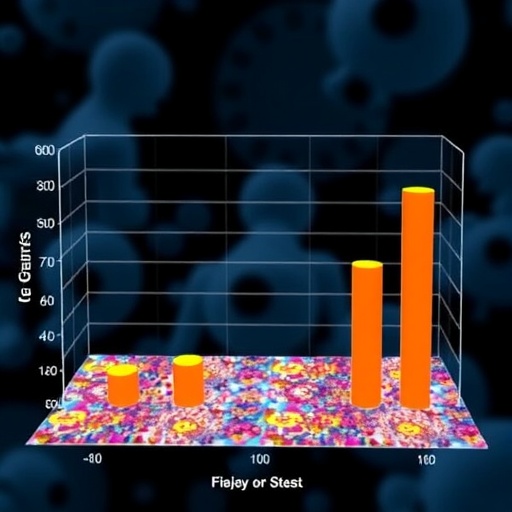
In recent years, the use of melatonin among pediatric populations has transformed from a niche, medically supervised intervention into a widespread practice crossing continents and cultures. As outlined in the compelling study by J. Owens published in World Journal of Pediatrics (2025), this global phenomenon bears significant implications for clinical practice, public health, and regulatory frameworks. Melatonin, a hormone naturally secreted by the pineal gland that regulates circadian rhythms, is now being consumed with increasing frequency by children and adolescents seeking relief from sleep disturbances. This expansion of use prompts urgent questions about safety, efficacy, and the socio-medical consequences of long-term supplementation in developing bodies.
Melatonin’s biochemical role in the regulation of sleep-wake cycles is rooted in the neuroendocrine architecture of circadian rhythm entrainment. Its secretion is influenced by light exposure, suppressing the onset of wakefulness to facilitate sleep initiation. In adults, melatonin supplementation has been proven beneficial for circadian rhythm disorders, including jet lag and shift work-related sleep disruptions. However, the pediatric brain and endocrine systems are uniquely sensitive, and the introduction of exogenous melatonin during critical periods of neurological and physiological development introduces complexities that are still not fully understood.
The massive surge in melatonin use among children is attributed in part to growing awareness of childhood sleep disorders, which range from insomnia to circadian rhythm abnormalities and behavioral insomnia. Parents and caregivers, often facing limited access to specialized pediatric sleep medicine, have turned to melatonin as an accessible, seemingly benign option. Over-the-counter availability in many countries has fueled this trend, accompanied by aggressive marketing that promotes melatonin as a natural and safe remedy. This perception, though widespread, may overshadow the nuanced reality of melatonin’s pharmacodynamics and potential for unintended consequences.
.adsslot_ivbIeBlhfN{width:728px !important;height:90px !important;}
@media(max-width:1199px){ .adsslot_ivbIeBlhfN{width:468px !important;height:60px !important;}
}
@media(max-width:767px){ .adsslot_ivbIeBlhfN{width:320px !important;height:50px !important;}
}
ADVERTISEMENT
Dosage variability remains one of the most confounding issues in pediatric melatonin usage. While endogenous melatonin levels fluctuate in the picogram range, supplements commonly deliver doses measured in milligrams—often orders of magnitude higher than physiological concentrations. This disparity raises critical questions regarding overdose risk, receptor desensitization, and feedback inhibition of endogenous production. Clinical trials to date have offered limited guidance on optimal dosing protocols, with considerable heterogeneity in methodological approaches and endpoints, complicating efforts to establish evidence-based guidelines.
Furthermore, the long-term endocrine effects of melatonin supplementation in children warrant rigorous investigation. Given melatonin’s role in modulating reproductive hormone secretion via its influence on the hypothalamic-pituitary-gonadal axis, there exists a theoretical risk that early and prolonged melatonin exposure could alter pubertal timing or reproductive health. Preliminary animal studies have suggested possible disruptions, but translation to human contexts remains speculative. Pediatric endocrinologists advocate for caution, emphasizing the critical need for longitudinal cohort studies to elucidate these potential risks comprehensively.
Neurologically, melatonin interacts with multiple receptor subtypes distributed throughout the central nervous system, contributing not only to sleep regulation but also modulating mood, cognition, and neuroprotection. Emerging research suggests that exogenous melatonin might influence synaptic plasticity during critical windows of neurodevelopment. Given that children’s brains are highly plastic and susceptible to environmental influences, the widespread use of melatonin could conceivably have subtle neuropsychological effects that manifest only later in life, complicating assessments of risk versus benefit.
From a pharmacokinetic standpoint, melatonin’s metabolism and clearance are subject to interindividual variability influenced by genetic polymorphisms in cytochrome P450 enzymes, age-related enzymatic activity differences, and interactions with concomitant medications. This variability complicates dosing and response predictability, raising concerns about inadvertent side effects or diminished therapeutic efficacy. Pediatricians and pharmacists must navigate this complex landscape carefully, particularly in polypharmacy contexts often encountered in children with comorbid conditions.
The cultural dimension of melatonin use reflects broader societal trends toward medicalizing sleep issues and favoring pharmaceutical solutions to behaviorally rooted problems. In many regions, increased screen time, altered bedtime routines, and environmental stressors contribute to a rising prevalence of pediatric sleep disturbances. Melatonin’s accessibility offers a potentially expedient solution but may inadvertently discourage the implementation of behavioral sleep interventions with more robust evidence bases and fewer risks. This shift underscores the need for integrative approaches combining education, sleep hygiene, and cautious pharmacological strategies.
Regulatory responses to the expanding melatonin market vary widely. In the United States and parts of Europe, melatonin remains a dietary supplement subject to less stringent oversight than prescription medications, resulting in inconsistent product quality, labeling, and dosage accuracy. Recent reports highlight issues ranging from contamination to unlisted ingredients, raising serious safety concerns. This regulatory grey zone challenges clinicians tasked with advising families on safe usage and complicates public health surveillance efforts.
Amid these challenges, research efforts are accelerating. Randomized controlled trials and observational studies seek to delineate melatonin’s therapeutic window in pediatric populations while monitoring for adverse events. Innovations in formulation, such as prolonged-release preparations mimicking physiological secretion patterns, promise to optimize benefits and reduce risks. Collaborative initiatives engaging scientists, clinicians, policymakers, and patient advocacy groups are critical in shaping guidelines that safeguard child health without stifling access to potentially beneficial therapies.
The ethical dimension of melatonin use in children deserves particular attention. Informed consent, especially in younger pediatric cohorts, involves weighing the knowns and unknowns of this intervention, balancing parental desires for immediate symptom relief with an understanding of long-term uncertainties. Healthcare providers must navigate this landscape empathetically, fostering open dialogues that empower families to make decisions grounded in scientific evidence rather than marketing hype or anecdotal endorsements.
Importantly, sleep is foundational to cognitive and emotional development, immune function, and overall well-being. The promise of melatonin to restore healthy sleep patterns carries enormous potential benefits, particularly for children suffering from neurodevelopmental disorders such as autism spectrum disorder and attention deficit hyperactivity disorder, where sleep abnormalities are common and debilitating. Tailoring melatonin use within comprehensive care plans, including behavioral therapy and environmental modifications, may enhance outcomes while minimizing risks.
In conclusion, J. Owens’ investigation into melatonin use in pediatric populations highlights an urgent public health concern underscored by complex clinical, pharmacological, ethical, and regulatory challenges. As the global community grapples with the consequences of this evolving trend, a coordinated response centered on rigorous research, safety monitoring, education, and policy reform is essential. Only through such measures can melatonin’s promise as a therapeutic agent for childhood sleep disorders be responsibly harnessed, ensuring that children around the world receive care that is both effective and safe.
Subject of Research: Pediatric melatonin use and its clinical, pharmacological, and regulatory implications.
Article Title: Melatonin use in the pediatric population: an evolving global concern.
Article References:
Owens, J. Melatonin use in the pediatric population: an evolving global concern. World J Pediatr (2025). https://doi.org/10.1007/s12519-025-00896-5
Image Credits: AI Generated
DOI: https://doi.org/10.1007/s12519-025-00896-5
Tags: circadian rhythm disorders in childrenglobal health concerns pediatric melatoninlong-term effects of melatonin on developmentmelatonin and sleep regulationmelatonin consumption trendsmelatonin use in childrenneuroendocrine system in childrenpediatric health guidelines on melatoninpediatric sleep disturbancesregulatory frameworks for melatonin in childrensafety of melatonin supplementationsocio-medical implications of melatonin use





